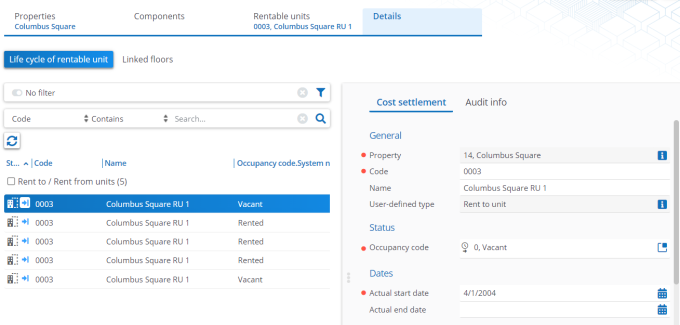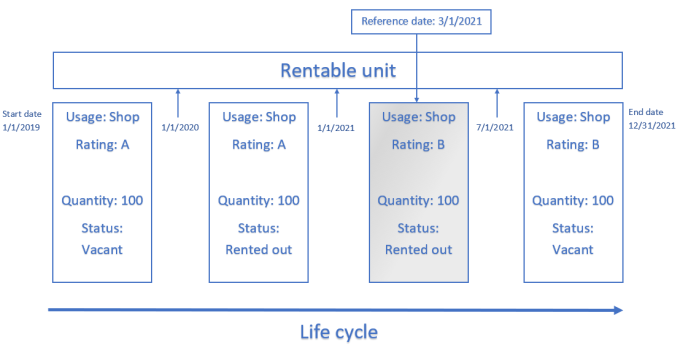Life cycle of rentable unit
You can keep track of changes that have been made to a rentable unit in the course of time. For this reason, the life cycle concept has been introduced. In terms of a rentable unit, a life cycle can be defined as a series of stages through which a rentable unit passes during its lifetime. A rentable unit has a start date and an end date. In the period between the start date and end date, a rentable unit passes through one or more stages, due to certain modifications made to the rentable unit. During the life cycle, the following attributes of a rentable unit can change:
• Occupancy (Vacant, Option, Rented out, Renovation)
• Usage (shop, office etc.) with Rating (building’s quality, location etc.)
• Quantity (area/pieces)
The > selection step provides information on a rentable unit’s life cycle with its different stages and attributes.
At the > selection step, each line represents a stage in the rentable unit’s life cycle. In the example image given below, you can see the occupancy stages of the property Columbus square RU1.
At the > selection step, each line represents a stage in the rentable unit’s life cycle. In the example image given below, you can see the occupancy stages of the property Columbus square RU1.

If you want to find out what a situation is/was/will be on a specific date for a particular rentable unit and its attributes, you can use the reference date. For more information on the use of a reference date, see Reference date.
